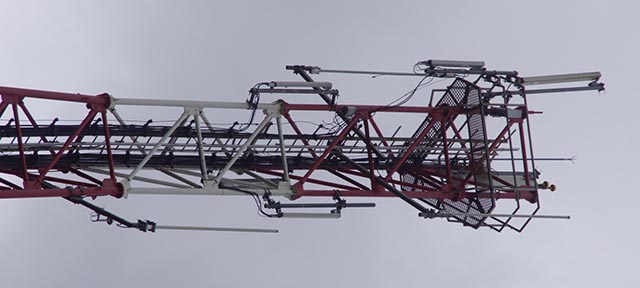Millimetre wave 5G is harmful to biological life. It kills insects, birds … and makes people sick. A bio-compatible alternative: infrared and visible light for data transmission.
5G is being promoted as the next big thing in mobile phone technology. It is said to be necessary for the construction of the IoT or “Internet of Things”. Dubious technological choices have been made, such as the use of biologically harmful millimetre waves for data transmission.
Are we still in time to re-think this and make the technology bio-compatible?
5G, as I understand it, is based on high frequency microwaves in the 3 to 300 gigahertz range, also called millimetre waves. Those are waves that have trouble penetrating matter, they can only get a few millimetres “under the skin”, but do not generally go through solid obstacles. As such, millimetre wave 5G is essentially a line-of sight kind of technology. It can be used only for the last few hundred meters of connection, with the long range transmission of the signal usually being through optic fibre cable connection.
Being in the microwave band, millimetre wave 5G is harmful to biological life. It kills insects, birds … and makes people sick. Millimetre waves have been used as a “crowd control” weapon, because a concentrated beam of those waves induces an unbearable burning sensation in people targeted by it. Insects are fried by them. The waves may not be deadly to humans, but for sure there are side effects that should have been explored before committing to a roll out of the technology. No safety studies were undertaken and I suspect that may be because the harmful nature of the waves is not exactly a secret. So why not avoid trouble, I hear them saying … only that the trouble will be abundant later on.
Now what would be an alternative to millimetre wave 5G?
Technically it is possible to use light waves for the transmission of data. This could be either visible light, already experimentally proven in LiFi, which is WiFi technology using visible light as the data transmission medium. We could also use waves in the infrared band, a technology that is well in hand as it has been used to power TV and other remote controls for decades. Both visible light and infrared are capable of similar data transmission speeds as the millimetre waves of 5G, perhaps even better as they are slightly higher frequencies.
The one huge advantage of infrared and visible light however, is that we KNOW them to be compatible with biological life. The sun has provided us with visible light and with healing infrared (heat) rays for eons, and our bodies are used to those.
There is however another thing that remains to be resolved.
WiFi and mobile cell phones use microwaves, but those waves are pulsed in “packets” of data to be transmitted. Approximately 200 of those packets per second. This 200 Hertz frequency of pulsation is in the range of biological frequencies and can thus have biological effects. It is very close to the frequency of the bees’ wing beat for instance, and may be responsible for the disorienting effect WiFi and mobile phone radiation has been found to have on bees. There may be other important biological side effects of that packet pulse frequency. In any case, many people are sensitive and suffer horribly when exposed to mobile phone and WiFi radiation.
EHS or Electromagnetic Hyper Sensitivity as it’s called, is recognised as a debilitating condition caused by exposure to such damaging electromagnetic frequencies.
So before deciding whether to adopt the 200 packets-per-second tact in light or infrared 5G, we would do well to do some tests. We should find a tact frequency for those data packets that is known to be compatible with biological life, perhaps even one that is associated with positive health effects. There are serious dangers to biological life from our current communication technologies, so serious that insurance companies are refusing to insure against those dangers.
If we want to communicate without killing ourselves and other life forms that share the planet with us, we should really take those things into account.
Let’s recapitulate. The optimal tech choice would be to have long range data transmission via fibre optic cables, and close range (mobile) connections via infrared and/or visible light, pulsed at a frequency that is bio-compatible.
Millimetre wave 5G may be good for crowd control and robots, but it is not a communications technology compatible with human biology and health, not to mention that we really do need those bees …
Sepp Hasslberger
13 June 2019
#randominspirations
Video: Arthur Firstenberg – 5G, Birds, Bees, and Humanity
https://vimeo.com/335886644


